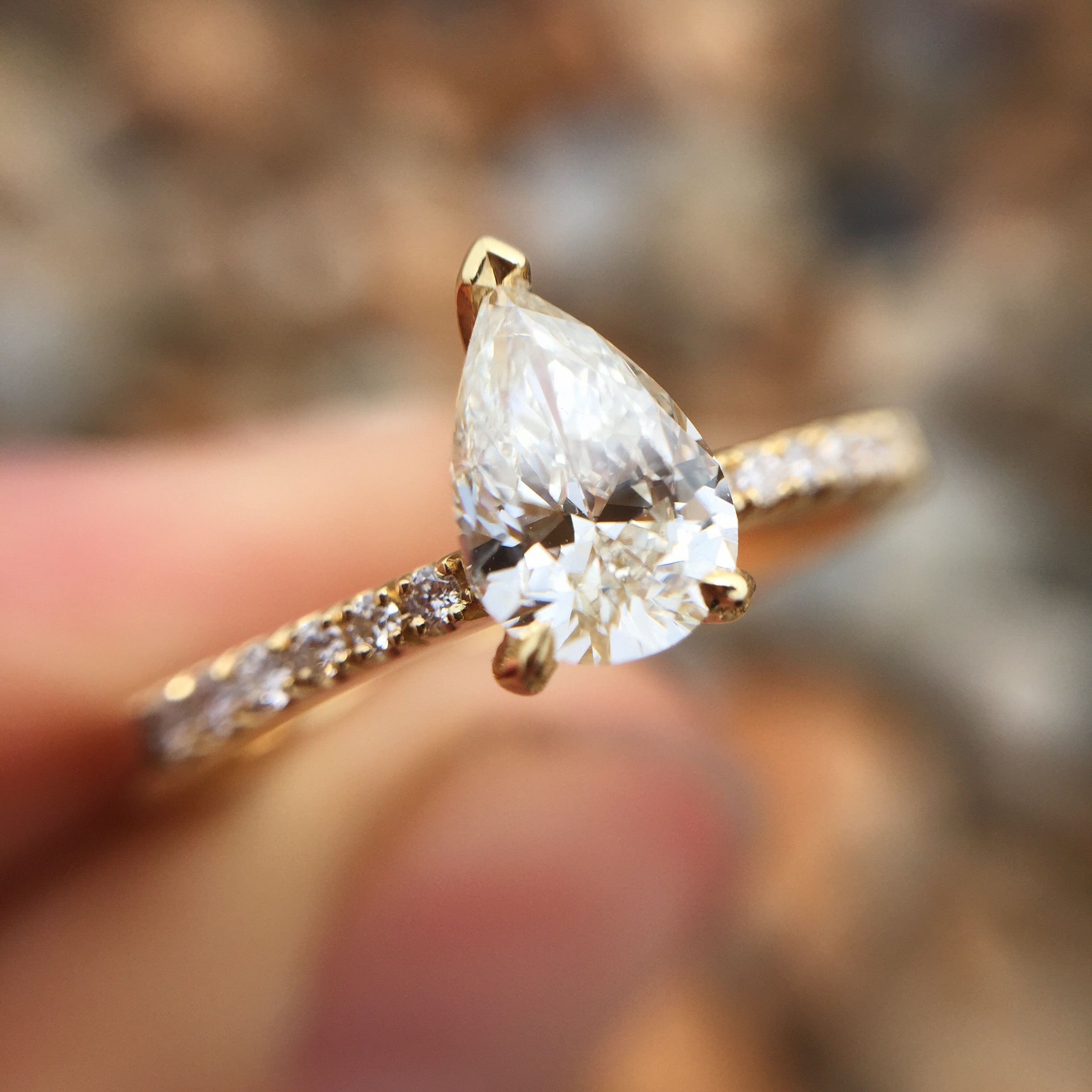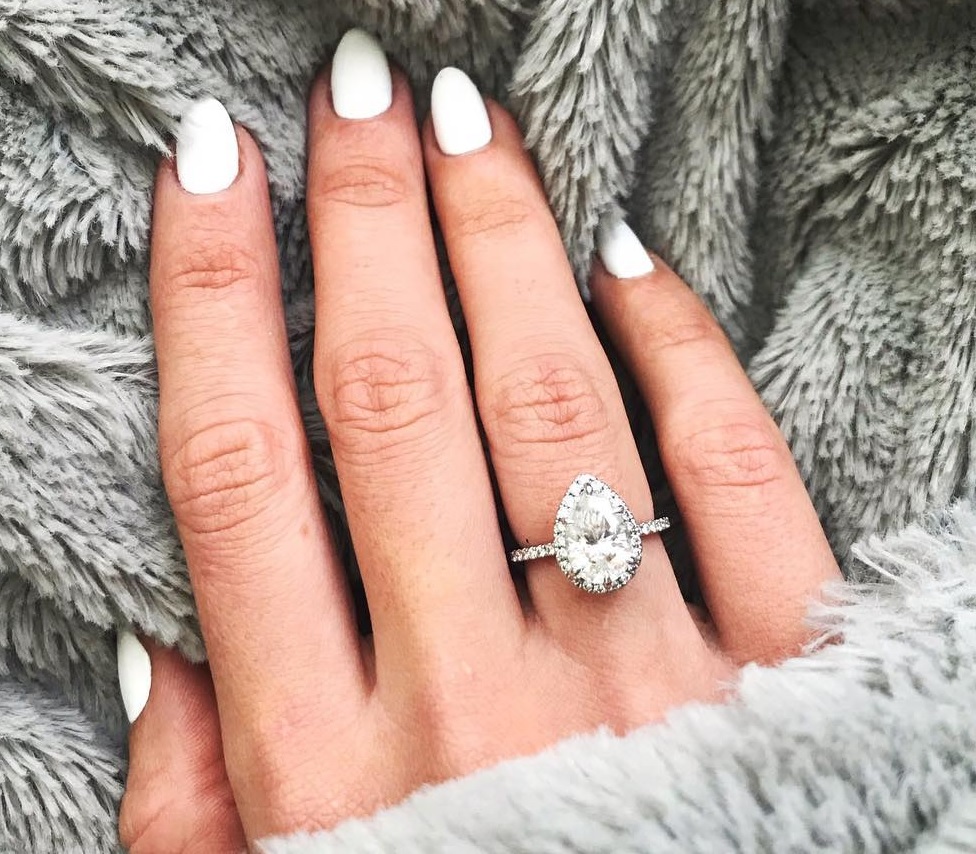Welcome back to the Diamonds Hatton Garden blog where we share the latest developments and insights from our Hatton Garden jewellers. In today’s blog we continue our on-going series examining diamond shapes with the spectacular Pear cut. The Pear diamond shape’s history can be traced back to 15th century Belgium and is closely linked to the development of diamond cutting. The Pear shape is the world’s most popular diamond shape, after the round brilliant, and can be commonly found as a gorgeous centrestone for pear shape diamond engagement rings as well as diamond earrings, diamond drop earrings in particular.
The History of the Pear Cut
The Pear cut is one of the oldest diamond cuts and its origins can be traced back to 15th century Belgium. Closely tied to the development of diamond polishing, the cut was invented by famed Flemish diamond cutter Lodewyk van Bercken who transformed how diamonds were cut through the invention of the diamond-polishing wheel.This revolutionary tool changed how diamonds were cut through enabling the fabled cutter to better place facets onto a diamond rough with complete symmetry, thereby creating a trail for the later development of complex diamond cuts. In that same year, he invented the world’s first pear shaped diamond. Since the creation, pear shape diamond engagement rings have been chosen by generations of couples to celebrate their love.

Where Does The Name Pear Cut come from?
The pear diamond—also known as the teardrop or pendeloque cut— takes its name from its distinctive and effortlessly feminine shape. The beautiful form blends together a Marquise and Oval cut combing to create the alluring and immensely versatile shape and is perfect for those looking for a larger pear shape diamond engagement ring.
What are the proportions of a Pear Cut Diamond?
The Pear cut is a beautiful dance between length and width that results in the famous shape. Generally speaking, a pear shaped diamond ought to possess excellent or very good Symmetry (Symmetry refers to how precisely the various facets of a diamond align and intersect). The point, which always faces the wearer, should line up with the centre of apex of the rounded end. The usual ratio for a pear cut diamond falls between 1.50 and 1.70 and the stone is usually comprised of 58 facets, although the number of pavilion facets may range from 4 to 8. Additionally, pear shapes are sometimes cut with a “French tip,” which replaces the large bezel facet at the point with star and upper girdle facets.

Why choose a pear shaped diamond?
With sloping and elegant curves the pear shaped diamonds symmetry and beauty make it one of the most versatile shapes. In particular, a pear shaped diamond is suited for diamond pendants, diamond earrings and, of course, pear shape engagement rings. The beauty of the pear cut also resides in the variety of the shapes that one can find with some being longer than others and other being wider.

With over 50 years experience within jewellery, Diamonds Hatton Garden canhelp you find the perfect pear diamond engagement ring. Book your personal appointment today via info@diamondshg.co.uk or on +44 7951 060238.

